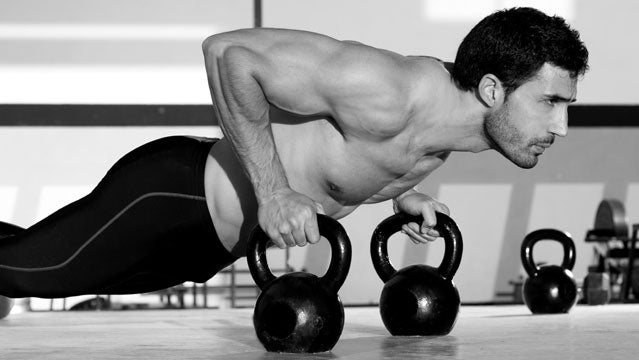It’s a painful truth, but there is no such thing as a sweat-free workout. Big gains take large commitments, which is what made the 7-minute workout so alluring: it promised to only take seven minutes! That’s also what the New York Times got wrong in its
An upgrade to the seven-minute routine takes 21 minutes to complete, but it won’t provide the strength and aerobic boosts it promises, or the specificity an endurance athlete needs to succeed.
But that’s okay. Sometimes, you’re not looking to achieve a personal best, just maintain your fitness and health. A new study in the may point toward the solution: the myth that fully resting between intervals will make you a faster runner has been busted.
Researchers assigned 18 runners to one of two training programs. Half of the participants ran at a high intensity—roughly the maximum pace they could sustain for 5 minutes—for 30 seconds and then rested for another 30, while the other group completed the same high intensity bout, but kept moving during their rest interval, at less than half the intensity of their on interval.
Both groups of runners saw large gains by the end of the study, but those who stayed active between intervals saw the largest increase in VO2 max, a crucial metric linked to fitness and overall heath.
It’s a paradox, but resting less may help you recover better, says Dr. Michael J. Joyner, a physician-researcher at the Mayo Clinic. The reason is twofold. When you’re tapping out a set of intervals, “going from 30 to 60 is a lot easier than 0 to 60,” he says. And more importantly, by staying active, you maintain blood flow to your muscles, allowing your body to metabolize lactic acid into fuel, helping to provide a source of energy for your next sprint.
This brings us back to the circuit. In theory, it combines the best of both the strength training and endurance worlds, allowing you to pack on muscle while working your aerobic system in a short period of time.
There’s just one caveat: To see an aerobic boost, you’ll need to activate large muscle groups at a high intensity with minimal rest. The planks and crunches in the 7-minute program won’t cut it, says , M.Sc., C.S.C.S., and author of MAX Muscle Plan. And even the fittest of athletes hitting the highest of intensities will be lucky to burn off a 100-calorie snack bag within 7 minutes, let alone create a day-long energy burn, says B.J. Gaddour, C.S.C.S., owner of .
But paired with a circuit that tests large muscles, the study suggests that you should jog, do jumping jacks, or maintain some aerobic element between sets, says Dr. Joyner. Instead of making your session tougher, this element of active rest may allow you to go harder when you need to, leading to larger gains. If you’re circuit training, set up your stations around the yard or at the four corners of your gym and jog to each station instead of taking a rest interval.
For the outdoor athlete looking for a quick but painful aerobic boost that maintains strength, pick eight exercises that target large muscle groups. That includes things like burpees, squats, pull-ups, mountain climbers, push-ups, lunges, tuck jumps, and dips, says Gaddour.
Just remember: traditional circuit training is often a compromise between muscle building and aerobic intensity. It doesn’t provide the specificity elite athletes need to see larger gains. What it does offer is whole-body fitness and low time commitment.


